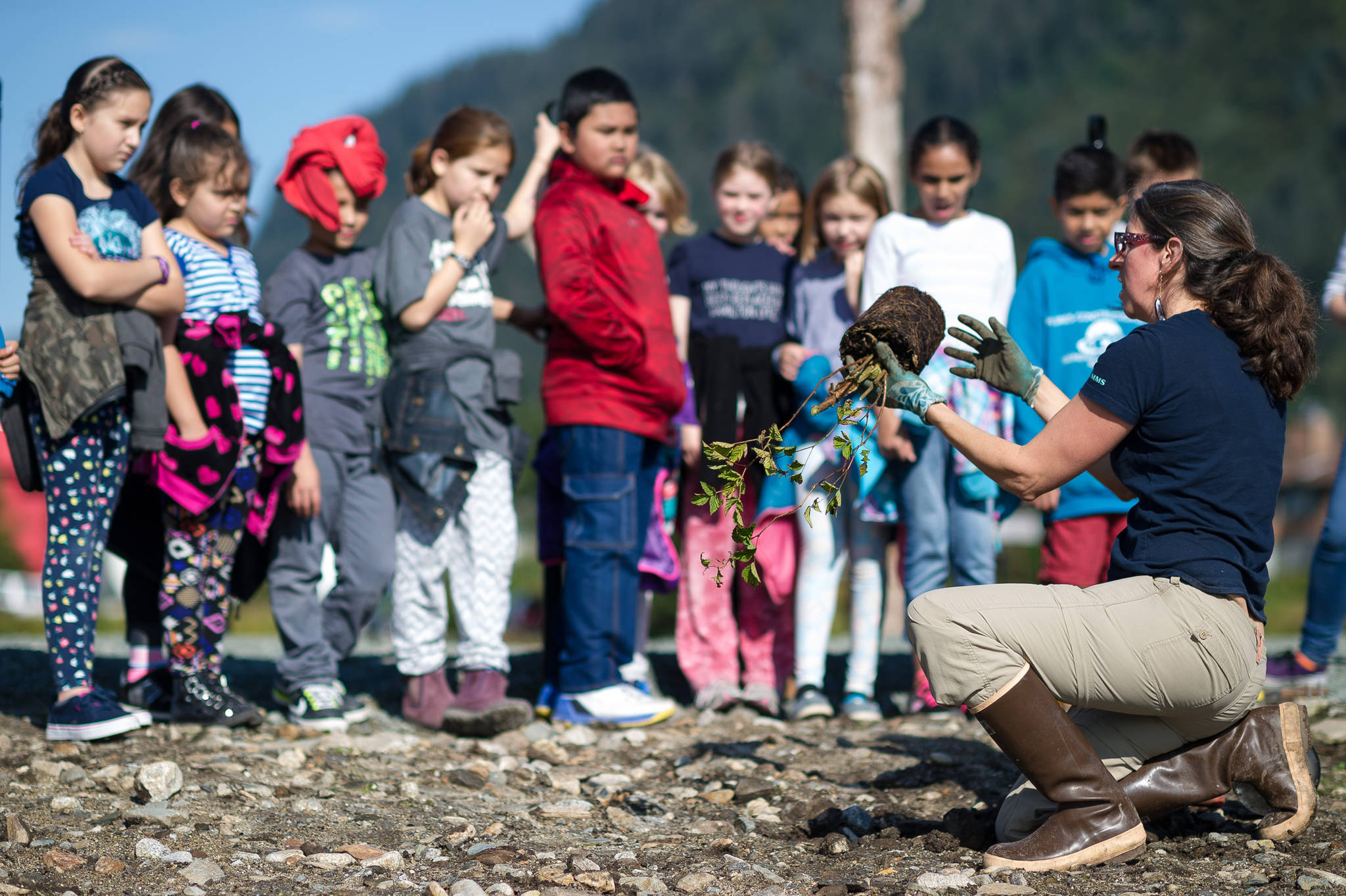It’s been nicknamed “Apocalypse Island” for its barren, rocky look, but the unnamed island built at the mouth of Gold Creek may need a new name next year, thanks in part to the work being done by some Juneau elementary schoolers.
On Tuesday morning, 15 first-graders from Harborview Elementary walked out of their classrooms and into the sunshine to plant native trees on the island. They were followed by fourth-graders who mustered shovels and trowels as they dislodged rocks to make room for salmonberry starters.
“This is way, way better than math,” said fourth-grader Kevin Flores-Lopez as he crouched in the dirt and scraped a hole for his salmonberry plant.
“Yeah, way, way better,” interjected Teara Mae Dennis, who was working on another hole nearby.
“And you get to get dirty!” added fellow fourth-grader Isabella Davidson.
Michele Elfers, the City and Borough of Juneau’s Chief Landscape Architect, met each group of schoolchildren as they arrived at the new Seawalk that crosses the island.
She said the kids were there — and others will come later this week and next — because the Seawalk project has a longstanding goal beyond a simple waterfront park.
Thirteen years ago, the City and Borough of Juneau finalized its “Long-Range Waterfront Plan,” which covers the distance from the Douglas Bridge to the Rock Dump.
The new cruise ship docks are part of that plan, and so are the Seawalk, whale sculpture and Apocalypse Island, which is open intermittently to pedestrians as work continues.
Under the plan, the island will become a park space associated with environmental education. Other parts of the waterfront are reserved for business parks, apartments and a marina.
A public meeting at 5 p.m. Wednesday in City Hall will address the portion of the waterfront between Marine Park and the Taku Smokeries dock.
Standing on the Seawalk, surrounded by fourth-graders, Elfers explained the plan to them: “We put this island here so you and your families could walk on the Seawalk and learn about the Juneau environment and you could learn about the shoreline and what plants grow here.”
A contractor has already come in to plant grasses and tidal plants that will be swept by the ocean. A fringe of grass is colonizing the island above the tideline, and birds are flocking to the mouth of the river to feed on the rotting salmon that wash ashore.
Elfers has reserved 300 native plants — twig-like willows and Douglas maples, plus larger salmonberry starters — for the elementary school kids.
“The plants we’re planting here today are to try to attract birds and animals to the island,” Elfers explained to the assembled students.
The students, listening, appeared more fascinated by another aspect of the island’s ecology: a dead salmon at Elfers’ feet.
“Oh, I smell it already!” one exclaimed.
Plants, fish and birds are all part of the lesson, Elfers said, and it’s a lesson intended to continue as the island grows wild greenery. She suggested it might be better to call the place “Habitat Island” instead.
“They can take their families here, they can come here with their school groups, and I want them to come out and notice how the birds that are here … and the dead salmon and the plants are all interrelated, and they all depend on each other. So I really like them to learn about that connection,” Elfers said. “That’d be a pretty good thing if any of them took that away, right?”
• Contact reporter James Brooks at james.k.brooks@juneauempire.com or call 523-2258.

